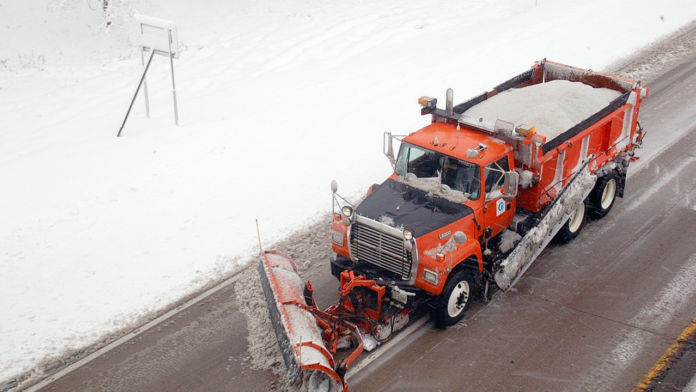
ST. PAUL, Minn. – The Minnesota Department of Transportation (MnDOT) is cutting back the amount of salt used on slippery winter roads.
In 2016, the Minnesota Pollution Control Agency (MPCA) worked with experts in the seven-county Twin Cities metropolitan area to develop a strategic plan for managing salt use and protecting water resources.
Now MnDOT is looking to expand the program statewide.
For several decades rock salt has been used to make icy winter roads safe for drivers. Now rising environmental concerns have MnDOT regulating how much salt is used on the state’s highways.
Rock salt, particularly sodium chloride, is regarded as the most efficient way to maintain clear roads. However, as the snow and ice melts and runs off the road, so does the salt, washing into lakes, rivers, streams, and wetlands all around the state.
MPCA estimates almost 78 percent of salt applied to roads in the Twin Cities area stays within the region’s watershed. Chloride is considered a permanent pollutant, and as little as one teaspoon is enough to contaminate five gallons of water. There is no biological process to remove the chloride from the water.
Studies done by MPCA have found 39 waterbodies in the Twin Cities area that test above the water quality standard for chloride. Another 38 waterbodies are nearing the limit.
During the winter of 2014-15, MnDOT used just under 174,000 tons of salt. That seems light in comparison to neighboring state Wisconsin’s use of over 388,000 tons of salt the same year.
MnDOT snowplow drivers have high-tech equipment that allows for more precise application of salt. The controls are operated by computers, and a GPS provides a variety of data including pavement temperature and wind speed. The actual plowing process may not be any faster, but the salt is used more efficiently.
However, even as MnDOT justifies the change in procedure, the measure is likely to draw criticism from those concerned about safe road conditions. MPCA Watershed specialist Brooke Asleson suggests less salt will not affect safety if drivers are slow and cautious.
“You can get just as safe of conditions if everyone’s driving slow and being cautious in the winter,” Asleson said in an interview with MPR News. “We can still get that same level of safety with much less salt. But currently, there’s just no alternative product that is really great at melting ice.”
Besides safety concerns, MnDOT’s new salting procedure runs into issues with enforcement outside of their jurisdictions. MnDOT can’t dictate the salt use of private contractors hired to clear areas like parking lots or sidewalks who may be concerned with the liability risk of somebody slipping and falling. New Hampshire remedied the problem by passing a salt applicator certification program in 2013.
Minnesota lawmakers have yet to pass a similar provision.













